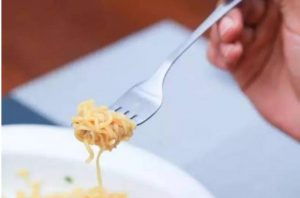(1) Eating spaghetti: Eat pasta and usually dine with a small fork and send it to the entrance. If you have a spoon, you can also roll a small spoon on the fork and put it in the spoon, then use the spoon to send the pasta to the mouth. If the pasta is too long, it is not convenient to roll, you can cut the pasta and eat the fork in advance by eating a knife. Be careful not to drop the sauce on the table or on the clothes when eating noodles, and don’t make a squeaky sound.

(2) Eat small grains such as rice, corn, and green beans: This is not the spoon, but the fork. Put a small food knife to help gather in the depression of the fork and sip.

(3) Eating salad: When eating a salad, try not to use a knife to chop the salad. Instead, use a fork to roll up or pick up the salad.You can buy a fork from the kids cutlery supplier.
(4) Eat thorny food such as fish: Eat a piece of fish and eat it. When eating whole fish with head, tail, and bones, you can cut off the head, tail and fins, put the cut head and tail fins on the side of the plate, and eat fish. Moreover, after eating the upper layer of the fish, do not turn the fish over, and use the knife and fork to strip the keel and then eat the lower layer of fish. If you have a lemon slice attached, squeeze the lemon juice with a knife and fork. Do not use your hands directly. If there is a fishbone in the mouth, you can remove the fishbone by hand from the closed lips and put it on one side of the plate.
(5) Eating lobster: When eating half a lobster, first insert the fork into the meat, then press the knife to press the lobster shell at the other end, so that you can drag the meat out and eat it. Lobster feet can be torn off with a finger and then eaten.
(6) Eat biscuits, potato chips or small-grain fruits: you can eat directly by hand.
(7) Eat large fruits such as apples, pears, etc. Do not bite directly with your mouth. Cut it first with a dining knife (or a fruit knife), and then cut the fruit into a mouth with a fork (or fruit fork manufacturers).

